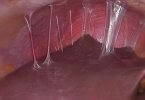What's in this article?
What is Breast rash?
Rash is a symptom that causes the affected area of skin to turn red and blotchy, and to swell. The rash may cause spots that are bumpy, scaly, flaky, or filled with pus. Rashes can vary in location, pattern and extent and may occur in any area of the body. A breast rash can have a variety of causes, and it may indicate something occurring in the breast itself or suggest a systemic (body-wide) condition.
Contact dermatitis (skin inflammation) is caused by an adverse reaction something that touches the skin, including chemicals found in detergent, soap or a fragrance. For example, you may develop a rash on your breast from wearing a shirt that was washed with a particular detergent or treated with a chemical. Metal, such as a necklace rubbing against your chest, can cause a breast rash. Other forms of contact dermatitis include exposure to certain plants, such as poison oak or ivy, an animal bite, or an insect sting. Allergies to foods, for example, peanuts, shellfish, strawberries or avocados, can also cause a breast rash.
Causes of Breast rash
Most breast rashes have the same causes as rashes occurring elsewhere on the body. Some rashes occur only on the breast.
Causes of rash that occur only on the breast may include:
- Breast abscess
- Inflammatory breast cancer
- Mammary duct ectasia
- Mastitis an infection in breast tissue that most commonly affects women who are breast-feeding
- Nipple dermatitis
- Nipple piercings or other body art, such as tattooing
- Paget’s disease of the breast
- Radiation dermatitis
General causes of rash that can affect any part of the body, including the breast, include:
- Atopic dermatitis (eczema)
- Candidiasis (especially under the breasts)
- Cellulitis (a skin infection)
- Dermatitis
- Hives and angioedema
- Psoriasis
- Scabies
- Seborrheic dermatitis
Treatment of Breast Rash
Treatment of a breast rash is dependent on the type of rash and causative condition. It may involve a combination of topical applications (cream, lotions, gels and medicated soaps), oral medication (tablets and capsules) and additional therapies such as PUVA light therapy. Therefore treatment measures may differ and it is important to first seek professional advice about the breast skin rash. Some of the general measures to prevent the rash from worsening includes :
- Using loose fitting undergarments and clothing.
- Discontinue any soaps, shampoos or body lotions that may irritate the skin particularly if it is scented.
- Using a suitable hypoallergenic emollient (barrier cream) to protect the affected skin from the environment.
- Avoid scratching as far as possible as this aggravates any condition and can lead to secondary bacterial infections. Keep the nails short and apply thick applications like petroleum jelly at night to avoid abrasion of the skin with unintentional scratching during sleep.
- Always use the treatment prescribed by a doctor. Over-the-counter and prescription medication or applications can be helpful but could mask the condition and worsen it in the long run if it was not specifically prescribed for the condition in question.






